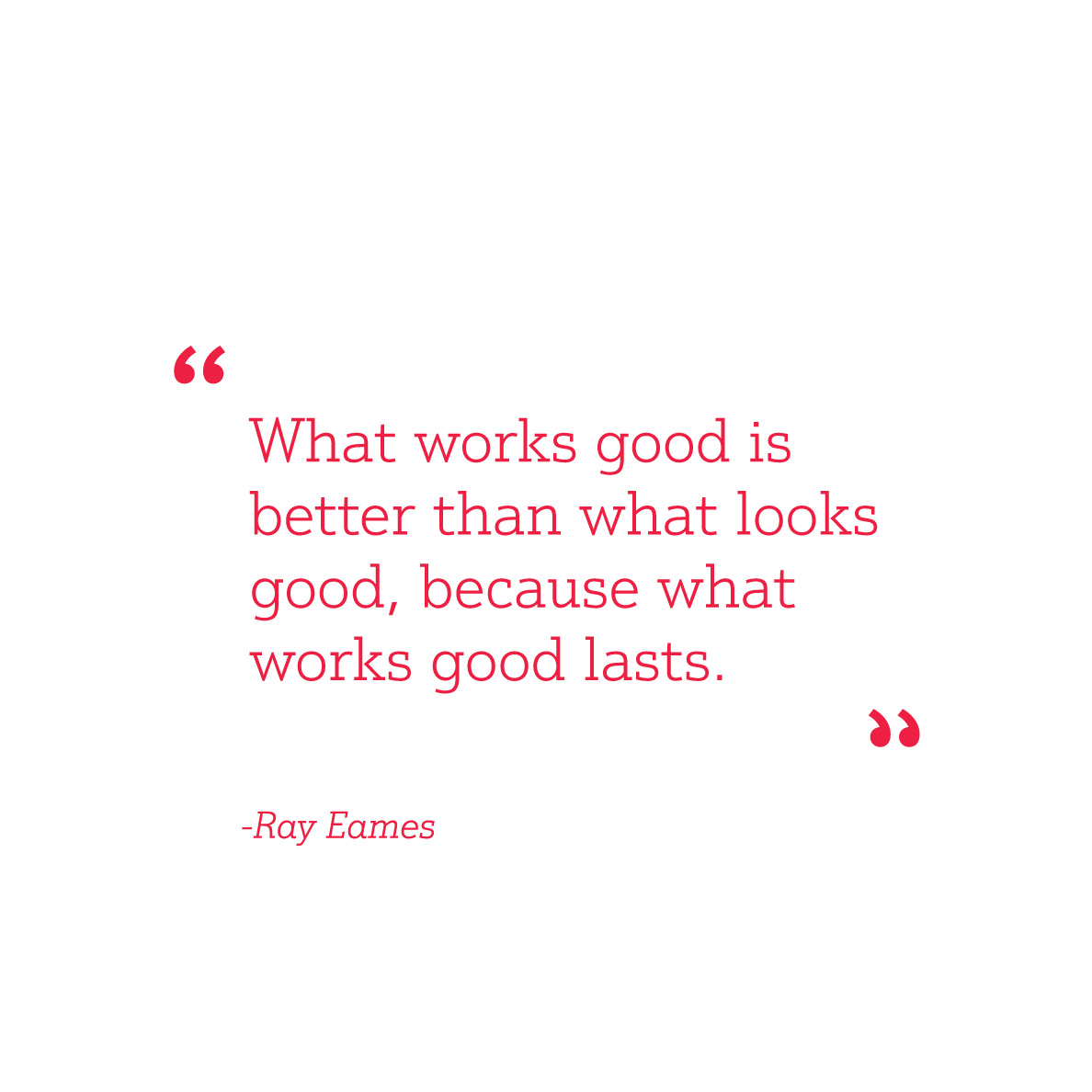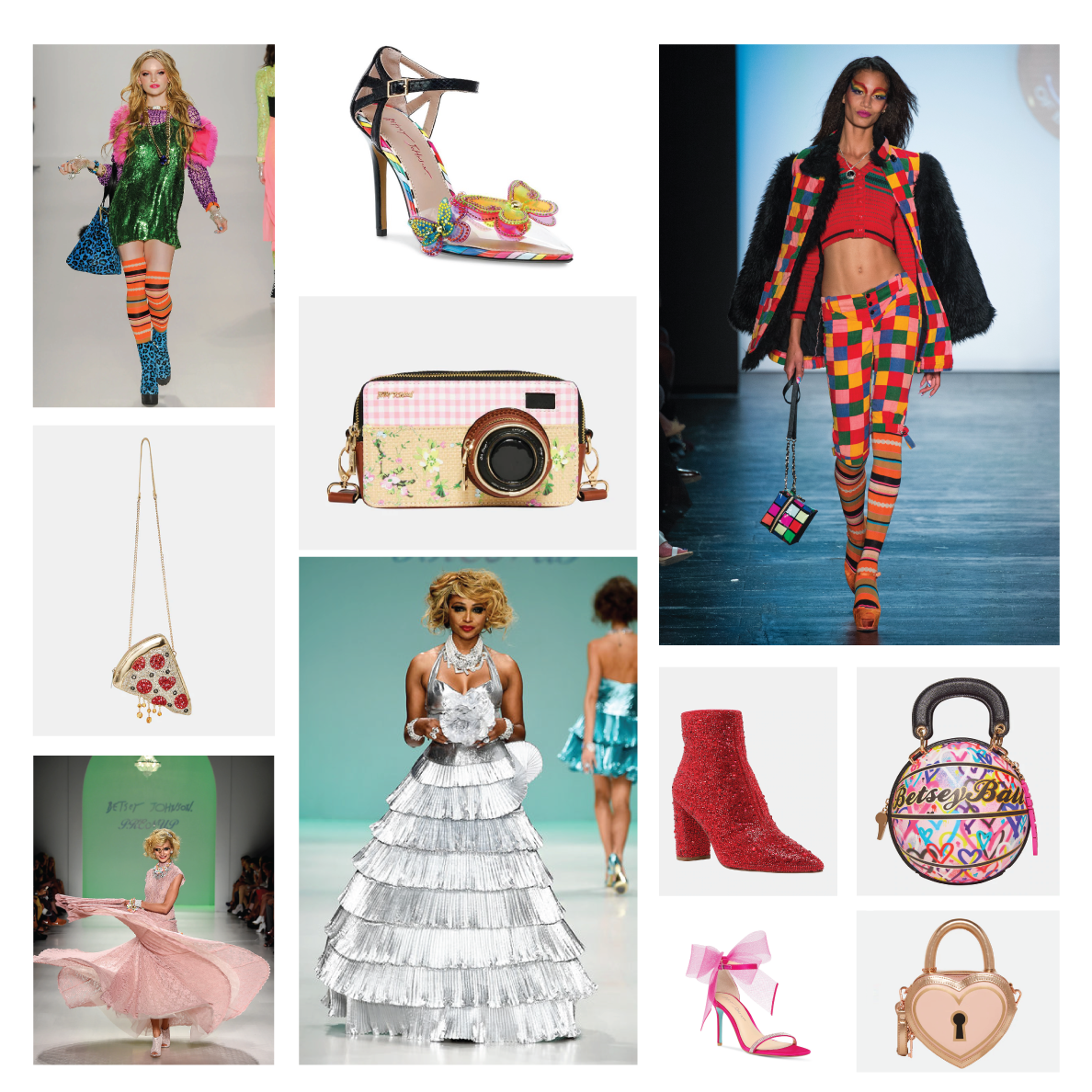Women’s History Month–Worldview Purveyors
As a Certified Woman Owned Business, we love celebrating the brilliance, vision, and diversity of the female mind — especially when applied to creative problems.
Studiolo Secondari has been sharing the work and stories of brilliant women in design, culture, and the arts weekly through our "Women Wednesdays" social media series. During this Women's History Month, we will take a deeper look at some of the figures we’ve highlighted in our #WomenWednesday series to offer you another chance to celebrate these brilliant girl bosses!
Ray Eames (1912-1988)
One of the most influential Post-War American designers, Ray Kaiser is best known for the illustrations and posters she created for corporations and the U.S. government from the early 1940s to the early 1970s, extolling a cheery, bright American lifestyle.
Born Ray Kaiser in Sacramento, California, Eames began her career as an abstract expressionist painter in New York city. In 1940 she decided to attend the Cranbrook Academy of Art, where she transitioned beyond painting into the wider world of design, and met her husband Charles Eames, with whom she would begin a successful collaborative design career.
In 1949 the two designed the Eames House, which would become their lifelong residence. A structure designed entirely based on the needs of those who would live in it, it was an “unselfconscious” and “anticipatory” design that remains a milestone of Modern architecture. Ray also produced graphic design work, designing 27 covers for Arts & Architecture journal, as well as textile designs, advertising, game boards, etc. Through the collaborative Eames Office, she helped design numerous commercially manufacturable pieces of furniture, popularizing the use of plywood as an affordable, high-performance material. Among some of the more popular designs released were the lounge chair, and the fiberglass shell chair. The Eameses were passionate about good craftsmanship, and traveled widely for research.
Much of Ray Eames’ recognition is posthumous, and she was largely discredited in favor of her husband for much of her career. Eames won many prestigious design awards, though they were always in tandem with Charles. In 2013 the California Museum held a year-long exhibition which showcased Ray’s life’s work, including solo work from before her collaborations. It was the first-ever museum show to focus solely on Ray’s contributions.
Gere Kavanaugh (1929-present)
The paragon of a multi-hyphenate designer, Gere Kavanaugh’s vibrant and daring imagination has sparked on everything from furniture, interior, and exhibition design, to graphics, toys, and textiles.
Gere Kavanaugh was born in Memphis, Tennessee, where she earned a BFA from the Memphis Academy of Art, and one of the first women to receive an MFA from Cranbrook Academy of Art. From there she worked as a stylist at General Motors; a member of the “damsels of design” team, one of the first groups of women to work professionally as designers in corporate America. In the 1960s she moved to Los Angeles, and the bright colors that she found on the West Coast continued to inspire her work from then on. She began designing interiors for Victor Gruen Associates, considering “the whole everything” of the space: from wallpaper to lighting, from sleek and elegant to vivid and exciting. In 1964, she founded her own design studio, Gere Kavanaugh Designs. Kavanaugh’s creative expression could not be contained to merely decorating space, and she evolved her practice to creating everything from household goods, teacups and umbrellas, ornaments and chairs, to textiles, birthday cakes, exhibitions–essentially anything she could get her hands on.
In 2014 Kavanaugh was awarded the Julia Morgan Icon Award, and in 2016 she won the AIGA medal. She lives in Los Angeles, in a home that is a paragon of design possibility; a living museum of her vital, maximalist aesthetic.
Betsey Johnson (1942-present)
Betsey Johnson is no stranger to style and cultural movements. The avant garde fashion designer began her career in the 1960s when her style was "Youthquake" inspired. She re-emerged in the 70s with a new look that was punk rock-influenced. Today she continues to create fashion for the bold and confident with designs that are graphic yet feminine.
Johnson grew up in Connecticut with a passion for drawing and dance, quickly finding her way to fashion design as a natural culmination–creating costumes–of the two subjects. She spent one year at Pratt Institute before transferring to Syracuse University where she graduated magna cum laude. In 1965 she got a job at the New York clothing boutique Paraphernalia, where she developed her whimsical sartorial style, and, along with artists like Mary Quant and Andy Warhol, pioneered the pop-culture-laden “Youthquake” movement. In 1970 she designed for the brand Alley Cat, with complete creative control, and won the Coty Fashion Critics award in recognition of her work.
With the arrival of the punk movement in 1978, Johnson started her own eponymous label, opening a boutique in Manhattan. The label grew in size and popularity from there and currently has 65 locations across the globe, firmly establishing Johnson as a force in the fashion industry. Despite a serious health scare at the turn of the century, Johnson kept her momentum. In 2003 she transformed the brand by expanding into other markets, introducing shoes, handbags, jewelry, and swimsuits to her collections. She received the Timeless Talent Award in 1999, and in 2009 she was awarded the National Arts Club Medal of Honor for Lifetime Achievement in Fashion.
* * * * * * * * *
It’s been a minute, wanna catch up?
I've taken a break from my regular newsletter recently, but a lot has been happening + I'd love to tell you all about it! My team and I are ready and able to help out with designing big, complicated book projects or developing design strategies that include branding, messaging, and ongoing digital communications. Feel free to grab some time to chat about your next project or just to say "hello"!
* * * * * * * * *
Studiolo Secondari is a certified woman-owned design studio focused on the practical and strategic business aspects of branding and publishing. We offer stylish and intelligent design solutions for organizations seeking to drive storytelling in print, web, and digital communications to showcase their message to the world.
* * * * * * * * *








